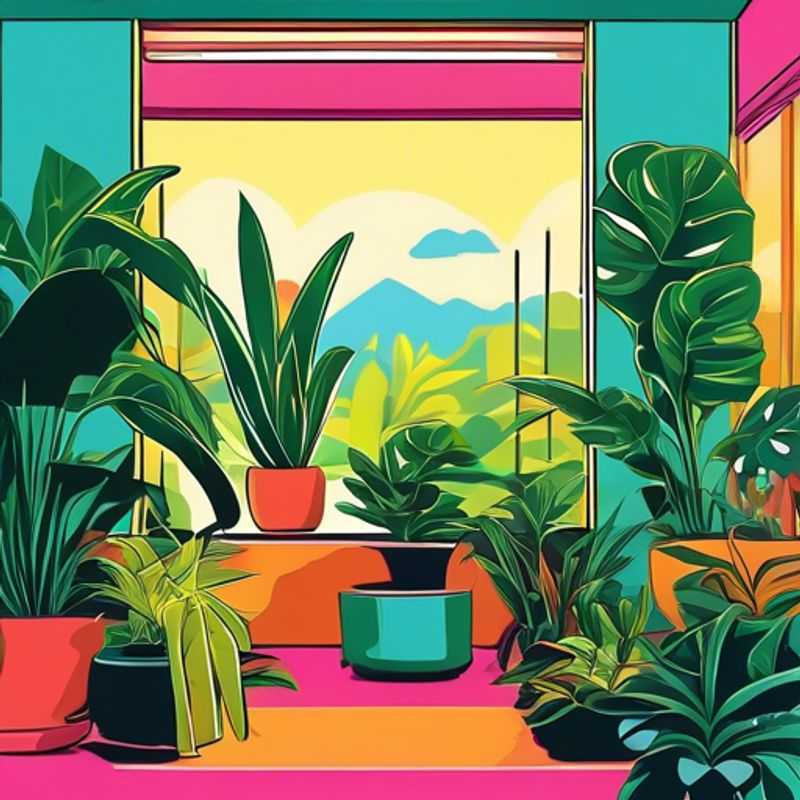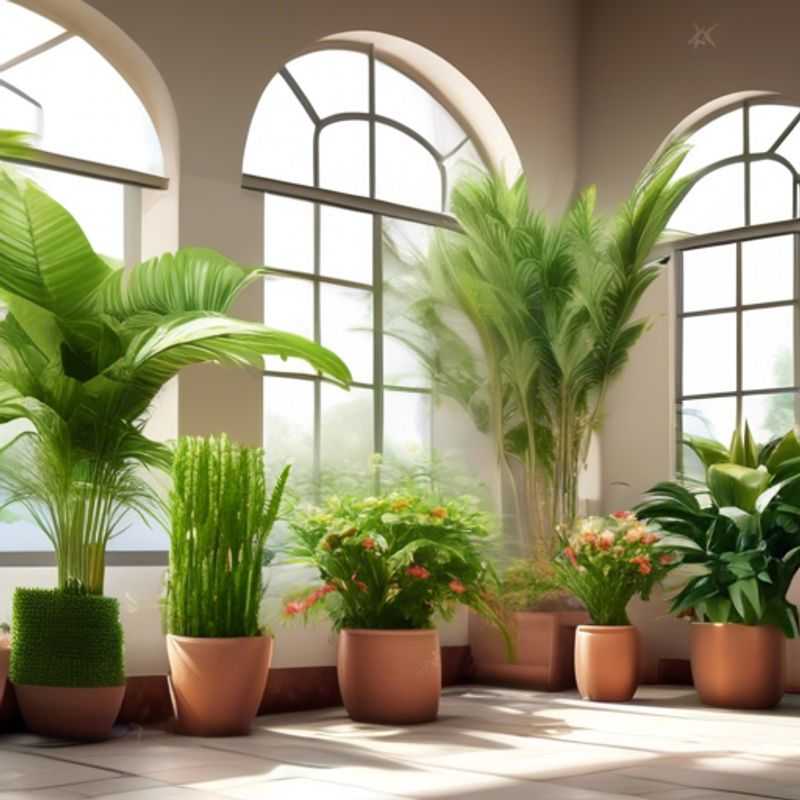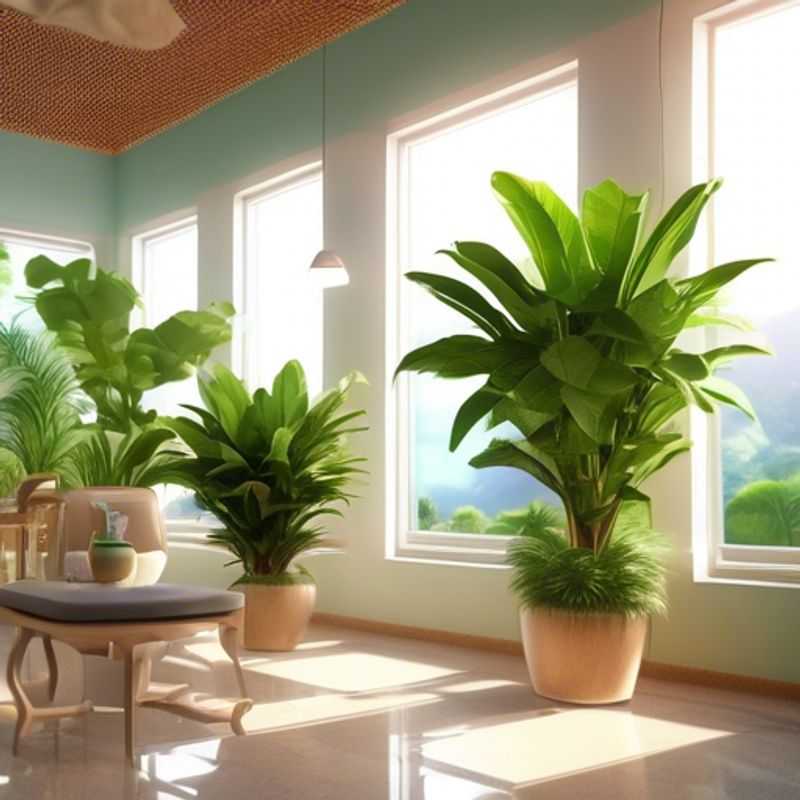Top 3 Things to Know Before Buying Easy-Care Indoor Plants

Lighting: Understanding Your Plant's Needs
Watering Wisdom: Finding the Right Balance
Size Matters: Choosing Plants that Fit Your Space
Bringing a touch of nature indoors is fantastic, but choosing the right plants can make all the difference. Before you head to the plant shop, there are a few key things to consider.
1. Determine the lighting requirements for the specific plant species. Plants have varying needs for sunlight. Some thrive in bright, direct light, while others prefer shady spots.

Shining a Light on Success: Determining Lighting Needs for Your Plants
Understanding a plant's lighting needs is crucial for its health and growth. Different plant species have varying light requirements, influencing their photosynthesis and overall well-being. To determine the optimal lighting for a specific plant, consider the following factors:
Light Intensity: This refers to the brightness of the light, measured in foot-candles or lux. Plants generally fall into three categories:
1. Low-Light Plants: These thrive in shady locations, tolerating low light levels. Examples include Snake plants, ZZ plants, and Cast Iron plants.
2. Medium-Light Plants: These require moderate light levels, typically found near windows with indirect sunlight. Common examples include Peace lilies, Spider plants, and Pothos.
3. High-Light Plants: These plants thrive in bright, direct sunlight for several hours daily. Examples include succulents, cacti, and many flowering plants.
Light Duration: This refers to the number of hours of light a plant receives daily. Most indoor plants need around 12 hours of light, although some may require more or less. You can use artificial light sources like grow lamps to supplement natural light.
Light Spectrum: Plants use different wavelengths of light for photosynthesis. Red and blue wavelengths are crucial for growth, while other colors have varying effects. Grow lamps often emit a balanced spectrum of light to support optimal growth.
Plant's Natural Habitat: Consider the plant's natural habitat and its light exposure in the wild. This can provide clues to its light preferences in a cultivated environment.
Observation: Pay close attention to your plant's behavior. Signs of insufficient light include slow growth, pale leaves, and leaf drop. Conversely, excessive light can cause scorching, wilting, or discoloration.
By considering these factors and adjusting the light conditions accordingly, you can create an optimal environment for your plants to flourish.

Know Your Plant's Thirst: Watering Needs & Frequency
Knowing your plant's watering needs is crucial for its health and longevity. The best approach is to research your specific plant's requirements, as they vary greatly. Generally, consider the following:
Type of Plant: Some plants thrive in consistently moist soil (e.g., ferns), while others prefer drier conditions (e.g., succulents).
Potting Mix: The type of soil used in the pot influences how quickly it dries out. Clay pots tend to dry out faster than plastic pots.
Environment: Factors like temperature, humidity, and light exposure can all affect how quickly your plant's soil dries out.
Season: Plants typically need more water during active growing seasons (spring and summer) and less water during dormant seasons (fall and winter).
Signs of Underwatering: Look for drooping leaves, wilting, and dry, crispy soil.
Signs of Overwatering: Yellowing leaves, root rot, and soggy soil are common signs of overwatering.
Watering Tips:
- Water deeply and thoroughly, allowing excess water to drain away.
- Check the soil moisture level before watering. Stick your finger into the soil about 2 inches deep – if it feels dry, it's time to water.
- Water in the morning to allow the plant to dry out somewhat before nighttime.
Always consult reliable sources like gardening books, websites, or experts to learn more about your specific plant's watering needs. Remember, the key is to adapt your watering routine based on your plant's individual needs and environmental conditions.

Choosing the Right Plants: Size and Growth Habits Matter
When choosing plants for your indoor space, consider the size and growth habits of the plant. Think about the space you have available and how much room the plant will need to grow.
Some plants are compact and stay relatively small, while others can grow quite large. It's important to select plants that will fit comfortably in your space without becoming overcrowded.
For example, if you have limited space, choose a smaller plant or one that is naturally slow-growing. Don't be afraid to research different plants and their mature sizes before purchasing.
Also, be mindful of the plant's growth habits. Some plants are trailing and vine-like, others are bushy or upright, and others are epiphytic. This will help you choose plants that will thrive in your environment and complement your decor.
